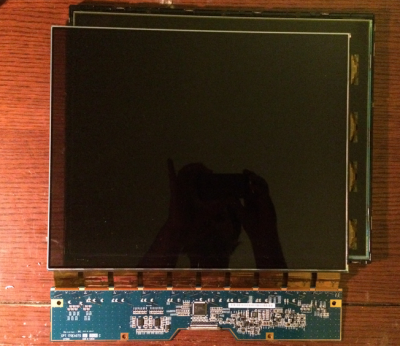[Travis] didn’t get picked to go to Google I/O this year, but he did have some I/O inspired fun after the fact. His friends who did go told him about specially modified LCD screens Google had scattered around the event. The screens showed normal show information when viewed with the naked eye. When viewed through a special transparent badge included with the I/O swag though, a URL for Google’s scavenger hunt would magically appear. [Travis] was intrigued by the effect, and became hell-bent on reproducing it himself.
[ Travis] figured out the transparent badge was actually a polarizing filter. Every standard LCD has two of them, usually bonded to the glass of the LCD itself. If you remove the filters from a LCD, you’ll get a prime view of the backlight – unless you’re wearing polarizing glasses of course. Google’s monitors didn’t have that effect though. They showed a full color display, with a second full color hidden display only visible through the polarizer
Travis] figured out the transparent badge was actually a polarizing filter. Every standard LCD has two of them, usually bonded to the glass of the LCD itself. If you remove the filters from a LCD, you’ll get a prime view of the backlight – unless you’re wearing polarizing glasses of course. Google’s monitors didn’t have that effect though. They showed a full color display, with a second full color hidden display only visible through the polarizer
It only took a bit of three-dimensional thinking for him to figure out Google’s trick. There are actually two LCDs used in the display. The first is a standard LCD with backlight. The trick is to strip the polarizing film off a second LCD and place it in front of the first. The second LCD will be invisible to anyone – without the polarizer.
[Travis] quickly set about replicating the display using several obsolete VGA LCDs. He quickly found that the hard part was peeling the polarizing plastic from the thin glass LCD sandwich. Several LCDs gave up their lives in the effort, but in the end [Travis] was successful. He made everything fit in one case by using a thin LED backlight in a case designed for a monitor with a Cold Cathode Fluorescent Lamp (CCFL). The result looks exactly like a standard LCD – that is, until viewed through a polarizing filter. Click past the break to see the hidden message LCD in action!
Continue reading “Trick Google Used Hides Secret Messages On LCD Screens”











